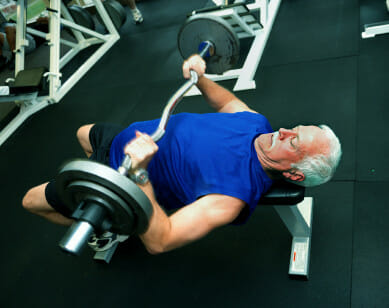Paul George’s horrific injury—an open fracture of his tibia and fibula that he suffered on Aug. 1 during a Team USA Basketball scrimmage—shook the sports community and just about anyone else willing to watch video of the incident. It was a reminder of the many inherent dangers in sports that may not be realized at all times and what one false step can lead to. Fortunately, though, George had surgery immediately after the accident and has thus begun his long road to recovery.
Given all the incessant chatter that’s been going on surrounding George’s injury, we at Dynamic Sports Physical Therapy thought it would be a good time to discuss bone health and what you can do to prevent and treat osteoporosis. It’s unlikely that any amount of bone strength would prevent George’s injury from occurring, but keeping your bones strong and healthy will still significantly reduce your risk of fracture.
Osteoporosis is a disease in which bones become fragile and more likely to fracture due to less density. Weight-bearing exercise helps keeps the bones strong by causing muscles and tendons to pull on bones, which in turn stimulates bone cells to produce more bone. Exercise such as running will accomplish this by loading bones to an extent, but weightlifting is the best way to get the full effect of this process.
Lifting weights can help protect bones and prevent osteoporosis-related fractures, and studies have even shown that weight training may prevent bone loss and rebuild new bone over time. Maintaining strong muscles through this training will also help you keep your balance and avoid falls, another risk factor for fractures.
If you have osteoporosis or are concerned with the strength and health of your bones, weight training may be your answer. Be sure to consult a physical therapist or personal trainer before starting any weightlifting, and follow these guidelines:
- Always begin at a low weight and gradually work your way up
- Start by focusing on the back and hips, which are typically most damaged by bone loss and at the highest risk for osteoporosis-related fractures
- Weight train 2-3 times per week with at least one day break in between
- Do one exercise for each major muscle group at a time, for a total of 8-12 different exercises with 1-2 sets of 8-10 repetitions for each exercise
- Lift and lower weights slowly with a count of about four seconds
- Tighten your abdominal muscles to help protect your spine
- Don’t use other muscles to compensate for the ones you’re working on
At Dynamic Sports Physical Therapy in New York City, we can provide you with a customized weight-training program based on your needs, abilities and goals, and can guide you through every step of the way. To learn more about how you can improve your bone health and prevent an osteoporosis-related fracture, or to schedule an appointment, call 212-317-8303.

